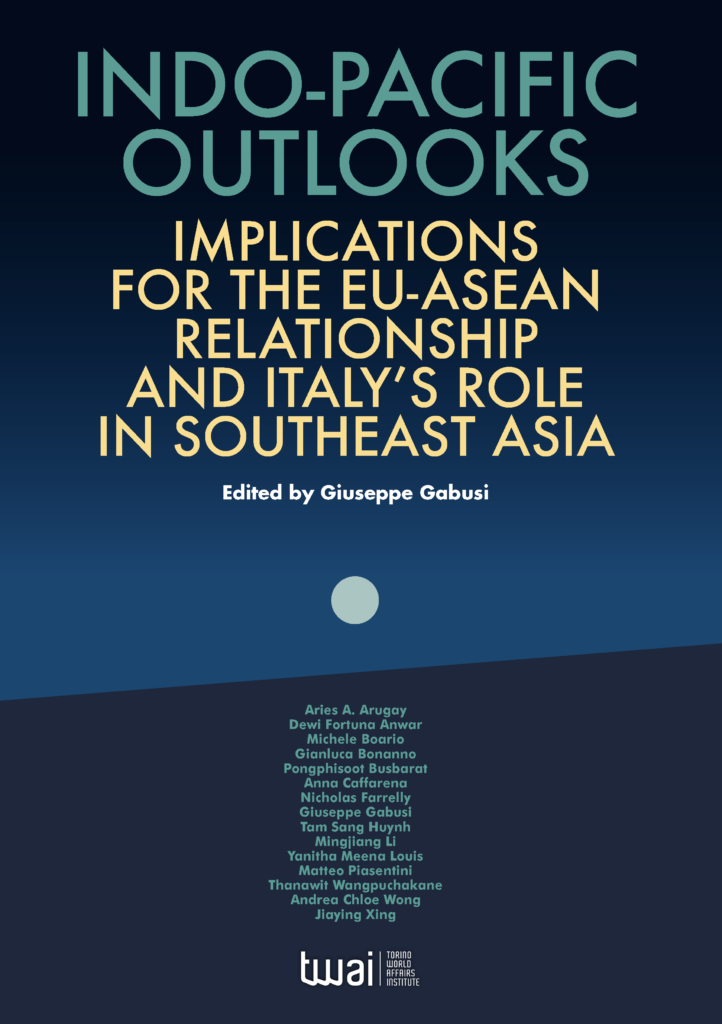
In recent years, the term “Indo-Pacific” has become popular in academic, media and policy-making circles to describe the area stretching from the Horn of Africa to the islands and atolls of the Pacific Ocean. The concept of a region centred on the confluence of the Indian and Pacific Oceans was first proposed by Japanese Prime Minister Shinzo Abe in 2007.[1] Since then, several countries and institutions, including the European Union (EU) and the Association of Southeast Asian Nations (ASEAN), spanning different continents, have adopted an Indo-Pacific foreign policy strategy. However, this does not mean that all countries view the Indo-Pacific in the same way.
In fact, regions in global politics are a social construct, not a geographical given. In constructivist terms, regions are what countries make of them. The same states can be located on the continent we call Asia and still be regarded as one unit within different regional perspectives and groupings. Japan, for example, is simultaneously part of East Asia (the region of the late-20th-century economic miracle in global political economy literature), the Asia-Pacific (the hub-and-spoke system of bilateral alliances and partnerships set up by Washington after Japan’s defeat in 1945) and the Indo-Pacific (a broader region encompassing countries such as India and Australia, thereby diluting the perception of a region dominated by China). This variety of definitions conceals “a competition to define the region’s scope and nature in ways that best serve the interests of key states. (…) So it is not so much a battle for influence within the region as concerns about influence and power driving a battle to define what the regional space should or could be” (italics mine).[2]
Firstly, redefining the regional space is conducive to rearticulating the regional order, but it also has crucial implications for the global order. This is all the more important at a time when the post-WWII liberal international order centred on American hegemony is in crisis, opening the way for new actors, narratives, and institutional frameworks. China and the United States, two great powers, are competing for control of the future direction of the global order. For both regional and out-of-region countries, being part of the evolving and dynamic Asian theatre means having an active stake in this reconfiguration process, rather than merely being passive observers of a show staged by Washington and Beijing.
In this complex scenario, any country or institution wishing to devise an effective Indo-Pacific strategy must take three steps. First, they must define the contours of the Indo-Pacific according to their national priorities, available resources and issue linkages. Where should the geographical boundaries of the region be located? Where do the relevant challenges come from? Where (and in what sectors) are the best opportunities available? Second, they must choose what role they want to play in the region. For example, they could be a security provider, a trade and investment facilitator, or a cultural power… Third, it is necessary to invest in essential partners that could represent the focus of engagement with the region.
This process is underway in Italy too. So far, Italy has decided not to formalize a national Indo-Pacific strategy, but to follow the example of the EU’s strategy, which was approved in 2021, and contribute its own specific ideas.[3] However, in March 2025, after conducting a series of auditions, the Committee on the Indo-Pacific of the Foreign Affairs Commission of the Chamber of Deputies (the lower house of the Italian parliament) published a report on Italy’s presence in the Indo-Pacific. In the document, MPs advocate the adoption of a formal strategy with the following aims: (i) rationalizing the efforts of individual autonomous actors already active in the region; (ii) emphasizing Italy’s specific multilateral approach; (iii) offering an innovative perspective in relation to the EU’s strategy, which appears outdated in light of the new geopolitical context following Russia’s invasion of Ukraine and the new stance of the US administration; and (iv) ensuring continuity of action across different governments, beyond the specific initiatives of individual leaders.[4] Any Italian strategy, whether formal or informal, should be based on the following pillars:
To contribute to this discussion, we have chosen to focus on ASEAN and its member states as key partners in any European or Italian engagement with the Indo-Pacific region. In November 2024, T.wai organized a workshop at Nanyang Technological University – S. Rajaratnam School of International Studies (RSIS) in Singapore, inviting selected scholars and practitioners from Italy, Southeast Asia, and Australia. Some of these individuals opted to participate in the research project by providing contributions tailored to their areas of expertise and interests. The initial findings were presented to the Ministry of Foreign Affairs and International Cooperation in Rome, as well as to the general public at an event held at the John Cabot University-Guarini Institute in June 2025.
The final output is now in your hands, offering a comprehensive overview of the political and strategic reasons why and how the time has come for the EU and Italy to establish a stronger presence in this region. This collection of essays is divided into two parts. The first part looks at the EU in the evolving Indo-Pacific region from various angles. Anna Caffarena and Giuseppe Gabusi consider how ASEAN centrality could reinvigorate multilateralism as a tool in global politics at a time of transactional diplomacy infused with competing nationalisms and deployed on a vast scale. Gianluca Bonanno elaborates on hedging as a common strategy adopted by regional countries to navigate the complexities of the Indo-Pacific. He considers the potential role of non-Asian countries (or institutions such as the EU) within this framework, suggesting that they could assist Asian countries in reducing their risk of strategic isolation by experimenting “while staying on the good foot of their core ideologies”. Pongphisoot Busbarat and Thanawit Wangpuchakane begin their chapter by addressing the leadership vacuum in the Indo-Pacific and the fact that China’s activism cannot replace American disengagement from the regional order, since several countries in the Indo-Pacific simply do not trust their large neighbour. Drawing on insights from neoliberal institutionalism, the authors argue that the EU has a historic opportunity to fill this leadership void as a stabiliser of the regional order, given its shared priorities with many middle powers in the Indo-Pacific.
However, the EU and its member states must be willing to engage with the region in the long term. This represents one of the five lessons that Nicholas Farrelly draws from the fifty-year experience of the ASEAN-Australia bilateral relationship. The region is difficult to navigate, particularly for normative actors such as the EU, and a willingness to embrace complexity and ambiguity is essential for successful dialogue. Full engagement with Southeast Asia also requires continuity in diplomatic and people-to-people exchanges to build a lasting, intergenerational web of connections. As ASEAN member states try to diversify their economic strategies and limit their overdependence on China, they see the EU as a valuable partner. While the EU cannot hope to match the level of interaction that China has developed with Southeast Asia in recent decades, as Jiaying Xing and Mingjiang Li outline in their contribution, it can leverage its image as a more benevolent and less threatening actor to increase its presence in the region. According to Dewi Fortuna Anwar, Europe now has the opportunity to finally overcome its colonial legacy, and the new Indonesia-EU Comprehensive Economic Partnership Agreement is testament to a shared interest in building free and open markets.
The second part focuses on Italy’s bilateral relationships with ASEAN and individual Southeast Asian countries. Michele Boario examines the ASEAN-Italy development partnership, reflecting on its achievements and challenges. This partnership is based on a shared commitment to inclusive and open regionalism between ASEAN and Italy, and has so far delivered 14 projects at various stages of implementation. However, relatively limited financial resources, bureaucratic hurdles and incomplete alignment with the EU’s strategic framework still hinder Italy’s full deployment of its potential in Southeast Asia. Nevertheless, Rome could fulfil its traditional role as a mediator by presenting itself as a “Global North–Global South Mobiliser”, as Yanitha Meena Louis argues in a chapter that also considers the limitations of the Indo-Pacific concept. She therefore suggests that Italy should avoid the “redundancy trap” by not adopting a distinct national Indo-Pacific strategy. Two chapters focus on Italy’s bilateral relationship with the Philippines. In the first of these, Aries A. Arugay and Matteo Piasentini emphasize Manila’s commitment to a rules-based international order as a foundation for engagement with Europe. They provide evidence of the Philippines’ activism in establishing new security partnerships, particularly in the maritime domain. However, they also argue that this strategy is only sustainable if Manila is willing to strengthen economic and developmental collaboration with various stakeholders, an area in which Italy could play a significant role. In the second chapter on the Philippines, Andrea Chloe Wong outlines the similarities between the Philippines and Italy: both are middle powers with a desire to avoid being caught in the middle of great-power competition. As their foreign policy strategies evolve, different leaderships could take the two countries in different directions, creating opportunities but also risks. Finally, Tam Sang Huynh offers a Vietnamese perspective, indicating how Hanoi regards Italy as a worthy candidate in its search for new foreign partners. To grasp this opportunity and foster their bilateral ties, both countries should consider niche diplomacy.
Unfortunately, another chapter is missing, as Luthfy Ramiz from the Habibie Center in Jakarta passed away before finalizing his writing. He left us too soon, and the least we can do is dedicate this essay collection in memory of.
[1] Sharma, A., Blaxland, J. (2022) “Shinzo Abe: Remembering the Architect of Indo-Pacific Strategy”, Australian Institute of International Affairs, 23 July, available online.
[2] Breslin, S. (2018) “Conceptualizing Asian Regionalism”, T.note n. 37, T.wai, 11 December, available online.
[3] MAECI (2022) Contributo Italiano alla Strategia Europea per l’Indo-Pacifico, Rome, 20 January, available online.
[4] Camera dei Deputati (2025) Indagine Conoscitiva sulla Proiezione dell’Italia e dei Paesi Europei nell’Indo-Pacifico, Rome, 12 March, 70, available online.
[5] Ibidem, 73-74.


Copyright © 2025. Torino World Affairs Institute All rights reserved
